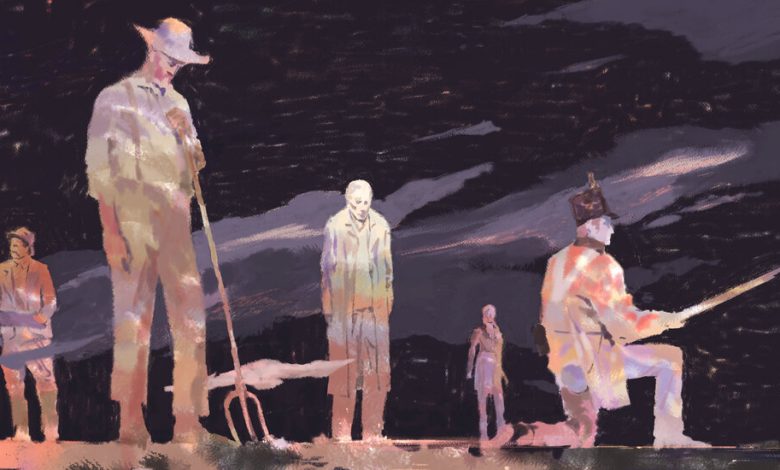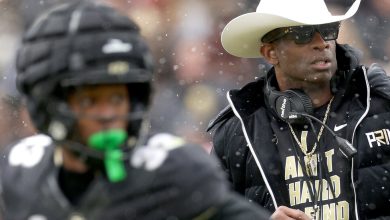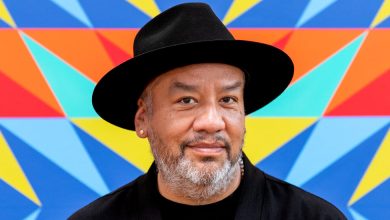A Novel Traces the Many Lives of a 19th-Century Romantic

THE ROMANTIC, by William Boyd
The Romantics took their time coming. For 10 centuries in the West there was only God, and all art — the beautifully illuminated breviaries, the vast cathedrals — was about him. Then, at last, around 1300 (in Dante, above all), the human face reappeared in the arts, the human as more than servant of king and Christ. What came next seems inevitable only in retrospect: first, the incandescent, revitalizing humanism of the Renaissance, followed by the arguably still more radical scientific and rational advances of the Enlightenment.
This was when the Romantics arrived. They represented a final moral rebellion against the monolithic medieval power of church and state — what actually mattered, they believed, was the individual spirit those institutions had subsumed for so long, the individual’s autonomy and passion, the authenticity of subjective emotions. As Goethe, perhaps the greatest artist the movement produced, famously wrote: “Feeling is all.”
Cashel Greville Ross, the protagonist of William Boyd’s new novel, “The Romantic,” is one of their number (as the title helpfully indicates). He’s another of Boyd’s marvelous “whole life” creations, a fictional character traced from birth to death: Born in 1799, he becomes, in these packed pages, a soldier, a writer, a jailbird, a farmer, an explorer in Africa, a pallbearer for Percy Bysshe Shelley, a friend to Byron, a diplomat in Italy and more, restlessly traversing the globe in search of a lasting identity.
Boyd spins these adventures into an absorbing tale. Of course, as the study of history has advanced beyond the simplicity of grand narratives, it’s become clear that Romanticism was a set of ideals available mostly to rich, white men: an assertion of total individual freedom based precisely on the lack of freedom of huge parts of society. Boyd, born in Africa to Scottish parents, educated (alongside King Charles) at Gordonstoun, and in more recent times the owner of a tony vineyard in France, seems indifferent to that conundrum in this story. For a reader willing to accept that lack of nuance, though, “The Romantic” is a panoramic, transporting yarn.
Cashel Greville (the Ross is added later, after some questions of bastardy are resolved) grows up in County Cork, Ireland. He is raised by his aunt, a governess who tutors him as well as the twin girls on the large estate where she works, and armed with this education Cashel proves clever, handsome and game. At just 15 he fibs his way into the army, and soon sees action at the Battle of Waterloo. For the remainder of his life this becomes his golden ticket: “The great revelation — Waterloo,” Boyd writes when Cashel starts meeting the Romantic poets in Italy. “Even Mr. Shelley stared at him respectfully with his big restless eyes.”
At this stage Cashel is writing a travelogue, which will eventually earn him a minor but significant reputation as a writer. When his publisher vanishes without paying him, though, he’s sent to Marshalsea debtors’ prison, the appalling place that Dickens wrote about so forcefully and eloquently. (Here and throughout the book, Boyd is superb at integrating period detail, excellent on the historical novelist’s thorny tasks of money, hygiene and travel — a pro’s pro.)
In prison, Cashel meets a working-class utopian who persuades him to take over a farm in Massachusetts. But eventually our picaro’s wanderlust becomes as much of a disadvantage as a strength to him. He falls in love three times in the book, ultimately losing each of the women; in a bid to find his fortune, after leaving America, he makes important discoveries in Africa, only to see them credited to others.
In this second half of Cashel’s life Boyd carefully lets us witness the hazards of Romanticism, including its practitioners’ susceptibility to selfishness. “He thought again of this pattern he had discerned in his personal history,” Boyd writes. “Always moving on, leaving people he loved behind. But he hadn’t discarded them, he insisted to himself. … One day he would return, he was convinced, and make everything right.”
For the length of his distinguished career, Boyd has been fascinated by the impossibility of this task. In several previous novels he has used the “whole life” form to scrutinize the illusions of wholeness we maintain in ourselves from start to finish. The best of these is “Any Human Heart” (2002), a comic, assured, wrenching work, and while “The Romantic” never quite attains its heights, it has the same largeness of spirit. By the time Cashel reaches old age, living in Venice, half in hiding from an enemy, it’s impossible not to hope that he can chase down Raphaella, the countess he loved best of all: to close at least one circle, to believe that more becomes of all our efforts than death.
Throughout Cashel’s escapades, “The Romantic” heavy-handedly insinuates its own relationship with Stendhal and Turgenev. (Stendhal’s “Charterhouse of Parma” has one of the most famous combat scenes in fiction: Fabrice’s bewildered participation in the Battle of Waterloo.) This is self-aggrandizement of eye-watering proportions; Boyd is far more akin to writers like H. Rider Haggard, W. Somerset Maugham, or, in our own day, Sebastian Faulks — late-imperialist Britons of modest stylistic accomplishment and first-rate storytelling.
Still, the presence of Stendhal and Turgenev is telling. Both belonged to the movement called realism; exasperated with the endless “feelings” of Romanticism, they sought to depict what they thought of as life’s actual nature, freed from poetic embroideries. In the realists’ eyes, the millenniums of illusion ended with them, the last illusion being the divine particularity of the self.
Most subsequent fiction is heavily in their debt. Yet the precepts of Romanticism have remained strangely durable, perhaps because capitalist modernity is so closely tied to the idea of individual destiny. Even very late in “The Romantic,” Cashel is still jotting down questions in search of himself. “How have I become the person I am today?” he asks. “Will I always be haunted by my origins and past?” We may live in the realists’ world, Boyd’s engrossing, scattershot novel suggests. But faced with a mirror, we are all Romantics.
Charles Finch is the author of “What Just Happened,” a chronicle of 2020.
THE ROMANTIC | By William Boyd | 451 pp. | Alfred A. Knopf | $30





